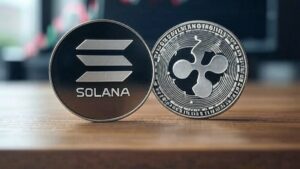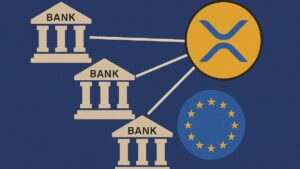TL;DR
- Version 2.5.0 of the XRP Ledger introduces advanced features like PermissionedDEX, transaction batching, and enhanced token escrow, aimed squarely at institutional use cases.
- With growing demand from major financial entities, the update positions XRPL as a regulatory-ready, scalable alternative to Ethereum.
- CME’s rising XRP futures activity underlines the token’s strengthening presence in global institutional portfolios and cross-border financial infrastructure.
XRP Ledger (XRPL) has officially launched version 2.5.0 of its core software, bringing in a suite of enhancements tailored to institutional use and regulatory alignment. This release sharpens XRPL’s enterprise edge with tools for greater control, scalability, and transparency, qualities increasingly sought by global finance players exploring blockchain.
The update introduces several key capabilities. Transaction batching enables enterprises to group multiple operations into a single atomic action, which can streamline complex operations like payroll, airdrops, or token distribution. Meanwhile, token escrow enhancements now support trustline-based and multi-purpose tokens, allowing for sophisticated asset control mechanisms vital for DeFi protocols and vesting schedules.
Permissioned Tools Enable Enterprise-Grade DeFi
A central feature in this update is the PermissionedDEX, which gives network operators the ability to restrict market participation according to compliance criteria. This function allows traditional institutions to engage in decentralized trading while aligning with regional regulatory requirements, a hurdle that has slowed broader adoption across the sector.
Equally important is the rollout of Permission Delegation. This feature allows token issuers to assign specific rights to third parties without ceding full control. By enabling layered account permissions, it facilitates treasury operations, automated financial services, and selective access to DeFi features while retaining on-ledger traceability and auditability.
RippleX, the development team behind XRPL, confirmed that these updates are expected to support regulatory frameworks such as MiCA in Europe. They may also accelerate the onboarding of banks, fintechs, and asset managers who require more structured and rule-bound environments.

XRP Futures Show Global Demand Shift
The update arrives as XRP shows signs of growing institutional traction. On June 24, CME Group reported that XRP and Micro XRP futures, launched just over a month ago, had surpassed $540 million in trading volume. Open interest reached $70.5 million, with activity spanning across ETFs, funds, and exchanges.
Notably, 45% of that volume came from outside North America, highlighting XRP’s rising international appeal. This trend reinforces XRPL’s move toward becoming a global financial layer that blends compliance with decentralization, without compromising on efficiency, security, long-term scalability, or developer accessibility for future upgrades and integrations across diverse financial ecosystems worldwide.










